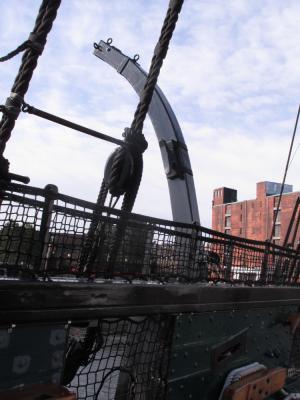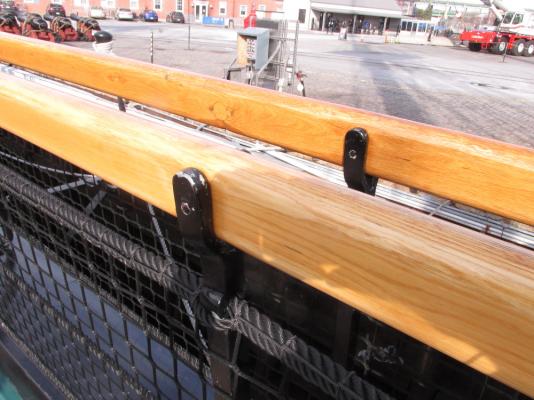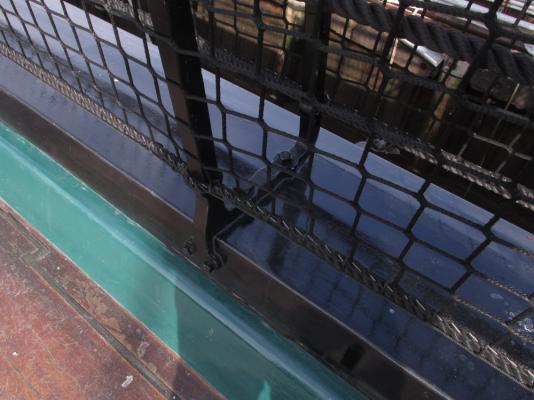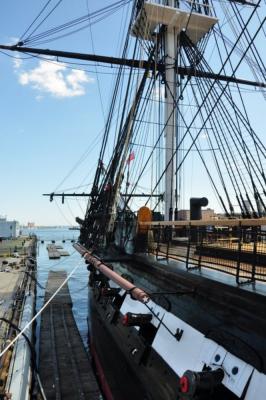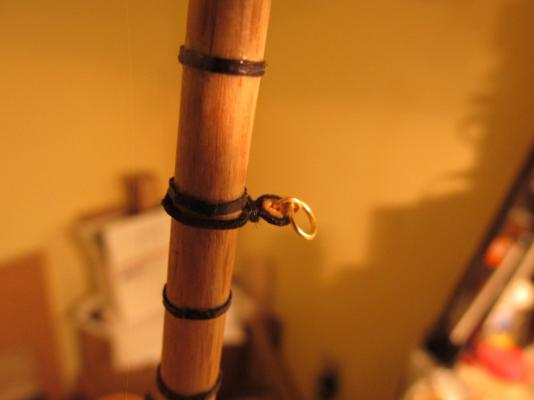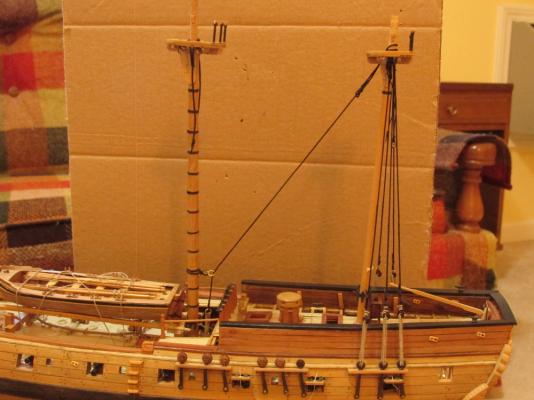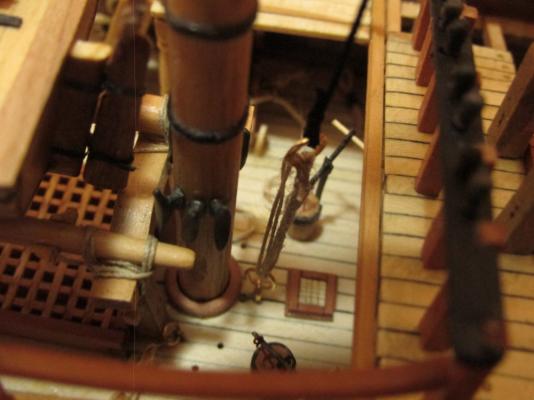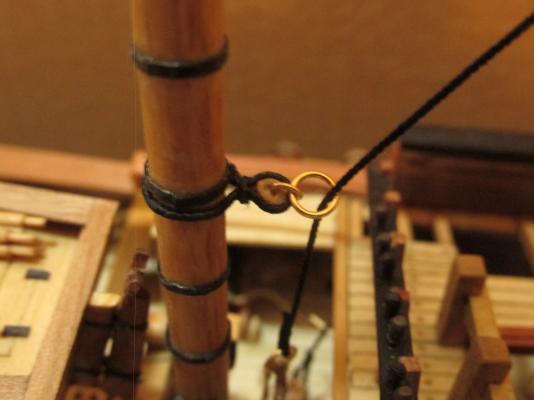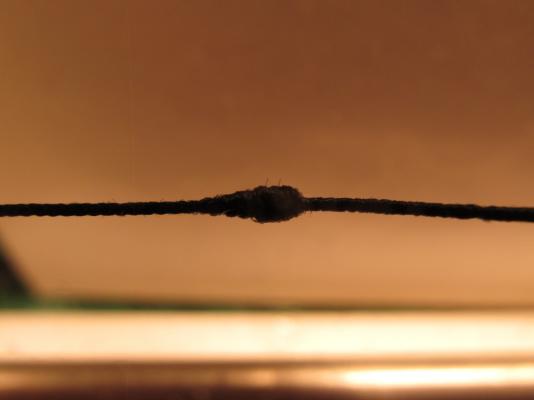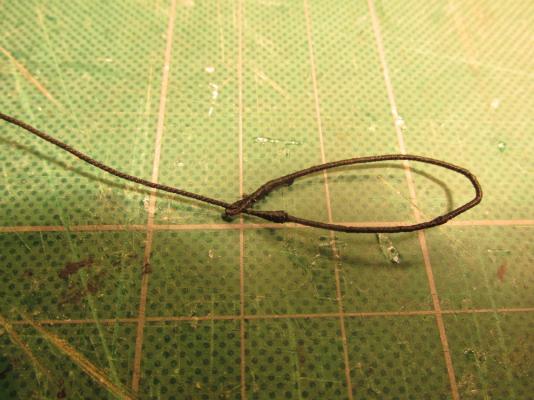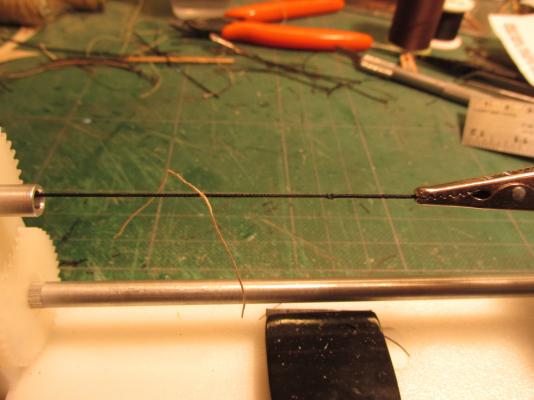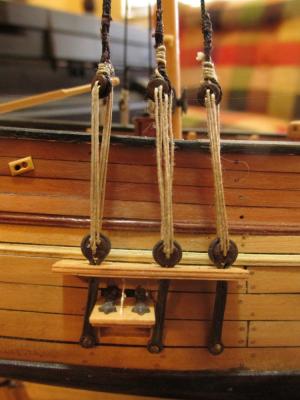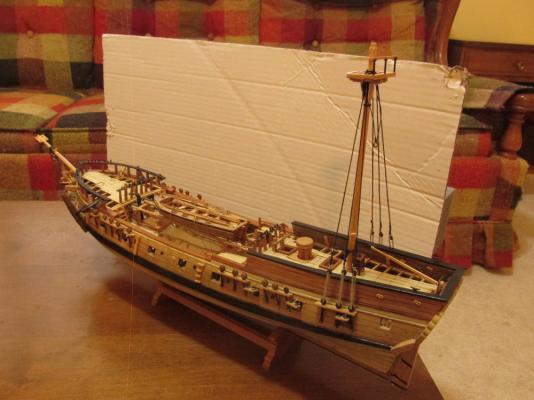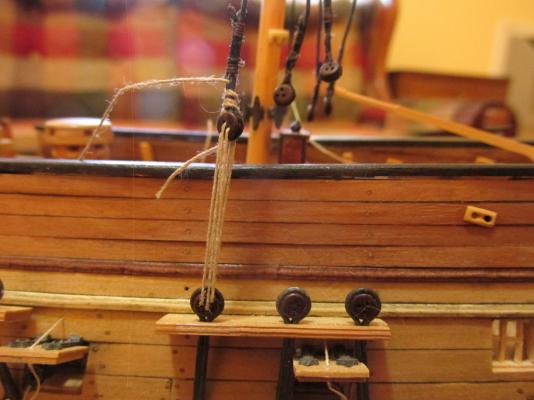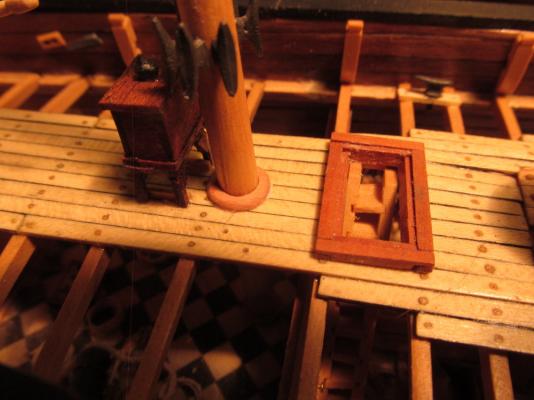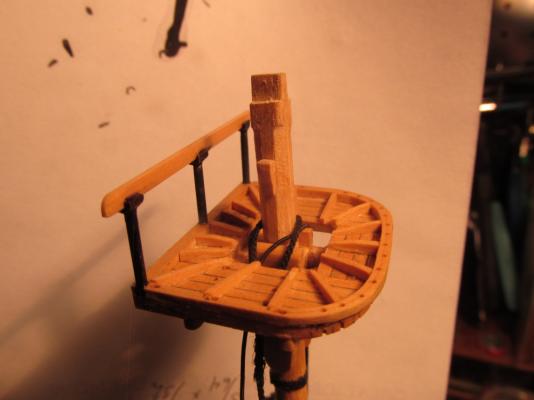-
Posts
2,611 -
Joined
-
Last visited
Content Type
Profiles
Forums
Gallery
Events
Everything posted by JSGerson
-
Found this for those spools: https://www.etsy.com/listing/212286136/10-large-wood-thread-spools-wooden?ref=market
- 732 replies
-
- constitution
- model shipways
-
(and 1 more)
Tagged with:
-
7 Provinces - I'm thinking about a new work bench/table and your idea sounds interesting. Any chance of some pictures to illustrate what you did?
- 396 replies
-
- Idea
- Bright Idea
-
(and 1 more)
Tagged with:
-
Jay, I recently visited the Constitution last Thanksgiving just as she was being taken apart for her move to dry dock for her next 3 yr renovation. All of her deck guns were removed and well as the yards. However, I just happen to take some close up images of the hammock netting and thought you might need/want another look/see. Just realized the last image (from the dock) is not mine, I got from the internet somewhere
- 732 replies
-
- constitution
- model shipways
-
(and 1 more)
Tagged with:
-
The Main Mast and its mast wedge were set into position and then another ring assembly made of stropped heart, a small ring, and a larger ring were lashed on. This ring assembly guides the Mizzen Stay where it is lashed to the deck rings. NOTE: Do Not Make This Mistake See Post 727
- 974 replies
-
- rattlesnake
- mamoli
-
(and 1 more)
Tagged with:
-
- 974 replies
-
- rattlesnake
- mamoli
-
(and 1 more)
Tagged with:
-
Mizzen Stay Working from inside to outside, the Mizzen Stay was next and it required a mouse. I saw a number of ways to construct this item. One was making a wooden cone, a pseudo mouse, and staining it black, another was going a step further and sizing the black cone, another method was building up the line with sizing to create the mouse, and final actually weaving a mouse on a jig. Since the stay had to be sized from the mouse all the way to the end loop, and due to the relatively small diameter of the stay and subsequently its mouse, I chose to build up the sizing to create the mouse. A measurement was taken to determine the location of the mouse and marked on the line with a light piece of thread tied to the appropriate mouse position.
- 974 replies
-
- rattlesnake
- mamoli
-
(and 1 more)
Tagged with:
-
It was brought to my attention that the single shroud (cut-splice) should have been placed in the most aft position. This mistake was not corrected. It would have meant dismantling and re-installing all of the rigging for something that was almost impossible to see. If you looked closely you may have noticed that the lashings of the shrouds were made with a dark brown thread. This was done for two reasons. First when I tried using black thread on the black shroud, I couldn’t see what I was doing and therefore was doing a lousy job. My eyes are not the greatest. I’ve been wearing glasses since I was seven and now I need tri-focals and a clip-on eye loupe. The second reason was even if I did a good job, nobody would be able to see it. If that was the case why bother? Hence, a slight lighter thread but still dark enough solved both problems. Also, if you have microscopic vision, you may notice that I painted the bitter ends chocolate brown to simulate leather protective caps.
- 974 replies
-
- rattlesnake
- mamoli
-
(and 1 more)
Tagged with:
-
My skills in photography are a little more sharper than my modeling skills. so I have a knack for hiding a lot of flaws that are a bit more obvious if you were to see the model in person. (In the distant past I've won a few photo contests and have a couple of magazine covers.) That being said, I figure by the time I'm ready to start the Connie, I should be worthy of the task.
-
Blue Ensign - Thank you very much! Coming from you is quite a complement. I've been following your Pegasus build with great interest and have learned a lot stuff from you.
- 974 replies
-
- rattlesnake
- mamoli
-
(and 1 more)
Tagged with:
-
Thanks for the complements, flattery will get you everything. Yeah, I figure those horizontal bars plus the ratlines will straighten everything out once they are installed later on. It just seems that no matter what I want to do, I have to do something else first (one of Murphy's Laws).
- 974 replies
-
- rattlesnake
- mamoli
-
(and 1 more)
Tagged with:
-
I'll be initially following Robert Hunt's practicum, and supplement it with Modeler12's build log plus another dozen or so build logs I'll also be checking. I've got them all copied so I'll always have access to them even if the unthinkable happens...again and the stuff is wiped out. As for kit bashing or even what time period the model will represent is still undetermined as I want to finish my first POB build, Rattlesnake. Even though the Connie is a smaller scale at 1:76 compared to the Rattlesnake 1:64, it's physically twice as big and has a whole lot more detail. I need to get my skills worthy of the task. At the rate I'm going, paint drys faster so it will be a few years yet.
-
I've been quietly following your build (among others) almost from your first post last March (2014) because I plan to start building my own Connie in the next few years. Today I looked back at your opening statements because I forgot what era your model was to be built to. It was then I realized that I knew of a link to a site where model builder Mark Antczak had built a 1797 version of the Constitution. Not knowing if you know this site I present it now just in cause you didn't: ShipModel.com Specifically: http://www.shipmodel.com/models/constitution-old-ironsid Jon
-
Texxn5: Are these what you are looking for? https://www.youtube.com/watch?v=rGu2cIu8lSE https://www.youtube.com/watch?v=qb-FA3P6PBk Part 1 https://www.youtube.com/watch?v=FV4WA2vCqD8 Part 2 https://www.youtube.com/watch?v=g7V_uJjoJEo Part 3
- 732 replies
-
- constitution
- model shipways
-
(and 1 more)
Tagged with:
-
Is this what you are looking for? https://www.youtube.com/results?search_query=Alexey+Domanoff
- 732 replies
-
- constitution
- model shipways
-
(and 1 more)
Tagged with:
-
The Bearding Line is the curved dotted line on the hull which curves up the stern in the above scan of the plans (Plate 4). I had a whole lot of trepidation when I cut the stem off. There was no going back once it was done. It looks like you did a neat job on its replacement. I had a devil of time making the piece fit tight. Jon
-
Thanks for the praise. It must be like watching paint dry at the pace that I'm going so I really appreciate it. Rigging is totally new to me. I have to understand the whys and hows before I do anything. I can sit and research or contemplate my naval for hours before I do anything; and that just might be tying a knot. 8-) Jon
- 974 replies
-
- rattlesnake
- mamoli
-
(and 1 more)
Tagged with:
-
The was a little twisting from the lashing but hopefully, that will get straightened out when the ratlines get installed later on.
- 974 replies
-
- rattlesnake
- mamoli
-
(and 1 more)
Tagged with:
-
Following Mr. Lennarth Petersson’s Rigging Period Ship Models the deadeyes were lashed in the manner described. The image below is the Port side while the one above is the Starboard.
- 974 replies
-
- rattlesnake
- mamoli
-
(and 1 more)
Tagged with:
-
The first shroud in the group to be installed was the most forward one, the one made with the cut splice. To ensure that the deadeye at each end were on the same and proper height, two identical wires were cut and formed into a shallow U-shape, one for each end of the shroud. First one side had the deadeye attached and the U-shape wire attached. Then pulling the line taught the height of the other side was measured and the deadeye attached. The other U-shape held it in place. If the line remained taught with the wires, I was ready to lash the deadeyes.
- 974 replies
-
- rattlesnake
- mamoli
-
(and 1 more)
Tagged with:
-
Also made long ago was the Quarter Deck Mizzen Mast Wedge which was installed into final position with the Mizzen Mast. The mizzen shrouds were now ready to be installed.
- 974 replies
-
- rattlesnake
- mamoli
-
(and 1 more)
Tagged with:
-
At this point I decided it was best if I installed the Mizzen Mast Top’s railing. The parts had been made earlier as documented in this build log.
- 974 replies
-
- rattlesnake
- mamoli
-
(and 1 more)
Tagged with:
-

Silver Soldering Tools
JSGerson replied to bundybear1981's topic in Metal Work, Soldering and Metal Fittings
Jay, You need to look at the link you provided for more details about silver soldering. A number of images are missing. -
I found this part fun to do and really tried to put in a lot of detail. It turns out a lot of that detail (window "glass," fancy paneling, etc) get lost once all the decks are finished and furnished. If I were to do it again, yeah I'd do it again because that's me. What I'm trying to say is don't get hung up on stuff that won't get seen if you have problems with it. I my case it was the window "glass" frames. The "glass" really wasn't needed because nobody could see it which would have made the window framing much easier. (See my log for the details).
About us
Modelshipworld - Advancing Ship Modeling through Research
SSL Secured
Your security is important for us so this Website is SSL-Secured
NRG Mailing Address
Nautical Research Guild
237 South Lincoln Street
Westmont IL, 60559-1917
Model Ship World ® and the MSW logo are Registered Trademarks, and belong to the Nautical Research Guild (United States Patent and Trademark Office: No. 6,929,264 & No. 6,929,274, registered Dec. 20, 2022)
Helpful Links
About the NRG
If you enjoy building ship models that are historically accurate as well as beautiful, then The Nautical Research Guild (NRG) is just right for you.
The Guild is a non-profit educational organization whose mission is to “Advance Ship Modeling Through Research”. We provide support to our members in their efforts to raise the quality of their model ships.
The Nautical Research Guild has published our world-renowned quarterly magazine, The Nautical Research Journal, since 1955. The pages of the Journal are full of articles by accomplished ship modelers who show you how they create those exquisite details on their models, and by maritime historians who show you the correct details to build. The Journal is available in both print and digital editions. Go to the NRG web site (www.thenrg.org) to download a complimentary digital copy of the Journal. The NRG also publishes plan sets, books and compilations of back issues of the Journal and the former Ships in Scale and Model Ship Builder magazines.



